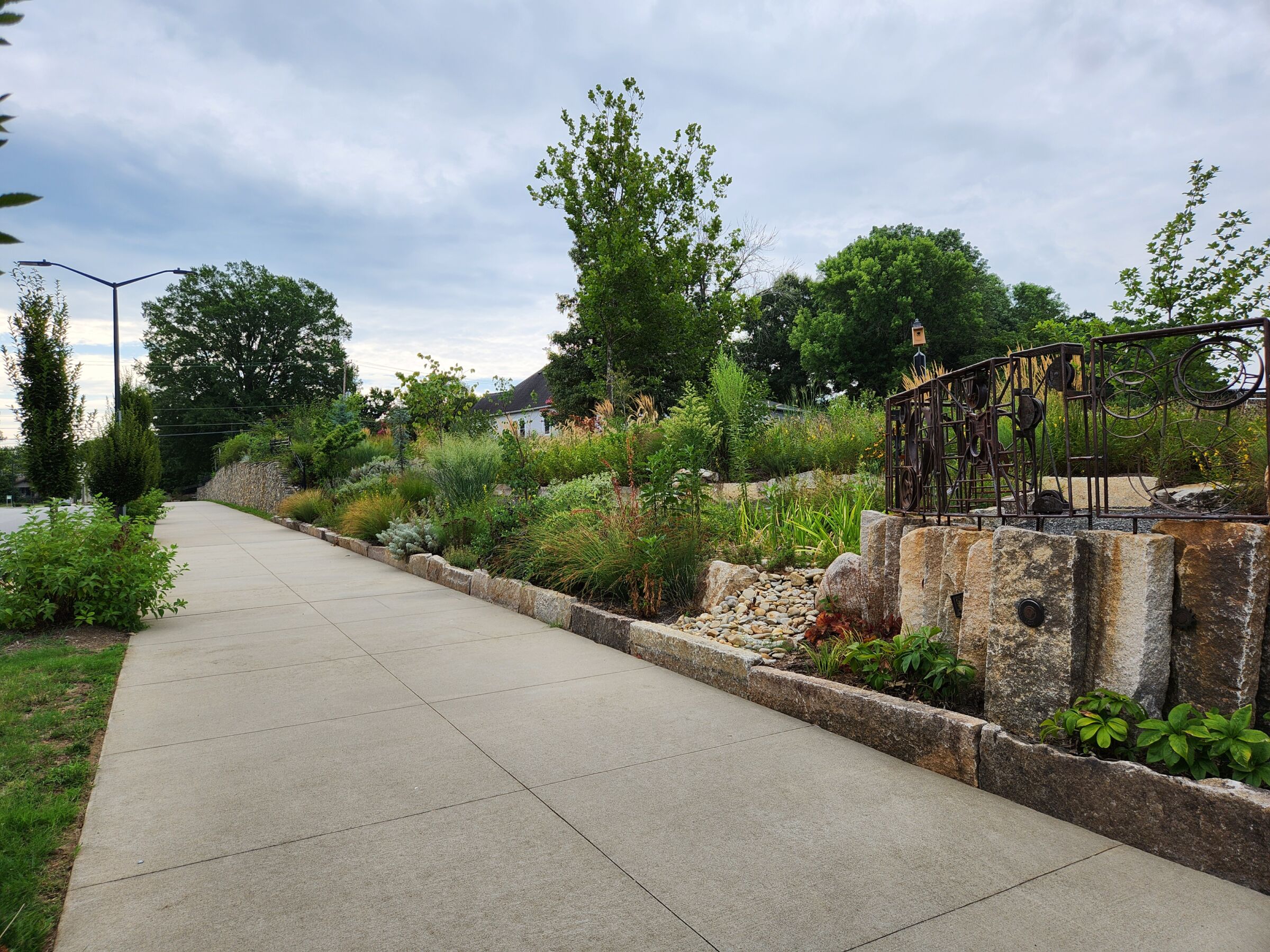
Impact: Sustainability
The Downtown Greenway is dedicated to sustainability, using alternative energies, and encouraging ecological diversity in Downtown Greensboro.
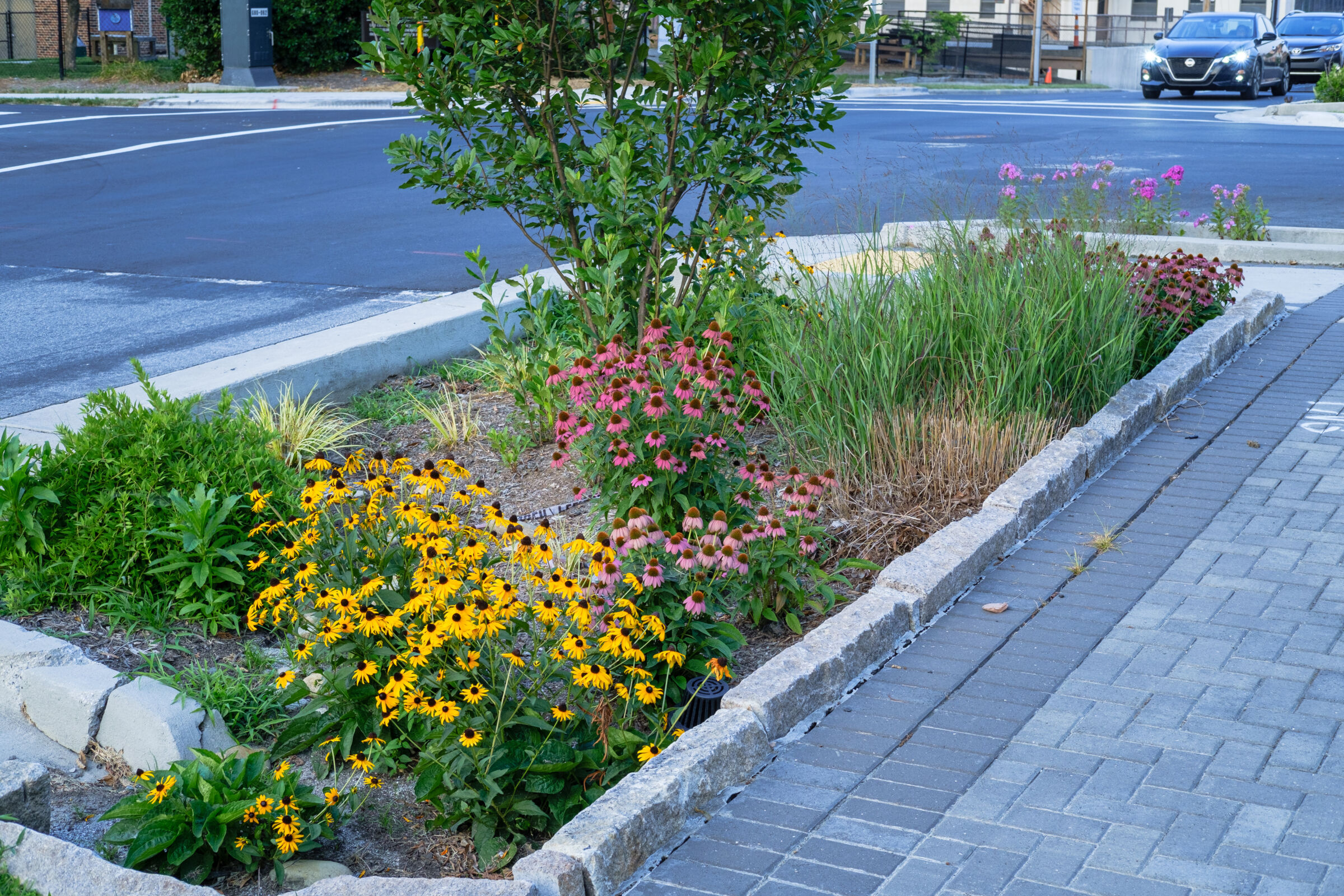
Eco-Gardens
The Downtown Greenway installed the first roadside stormwater treatment facilities in the city of Greensboro. Also known as bioswales or tree-wells, these mini gardens improve water quality by filtering storm water and cleaning rainwater run-off through specially constructed soil in the tree well. Water flows into the tree wells by large cuts built into the framework. Once the water enters the tree well, it’s filtered through a special mix of soil: peat moss, leaf compost, sand, clay, and gravel. The sand and gravel act as a natural trap for grit and automotive fluids that settle on the blacktop and wash away when it rains. The plants also remove nitrogen and phosphorous from the water and leave it cleaner as it enters our water supply. Our system includes more than 175 bioswales, curb extensions, and rain gardens.
Solar Power
The Downtown Greenway received a Federal Energy Block Grant in 2011, funding solar-powered lighting that illuminates the trail along the Morehead Park section with energy-efficient LED lights. The free-standing, environmentally friendly lights are completely independent from the electric grid and were certainly a cost-effective solution for our lighting needs at the time. These lights were replaced in 2024 with new and improved technology and functionality.
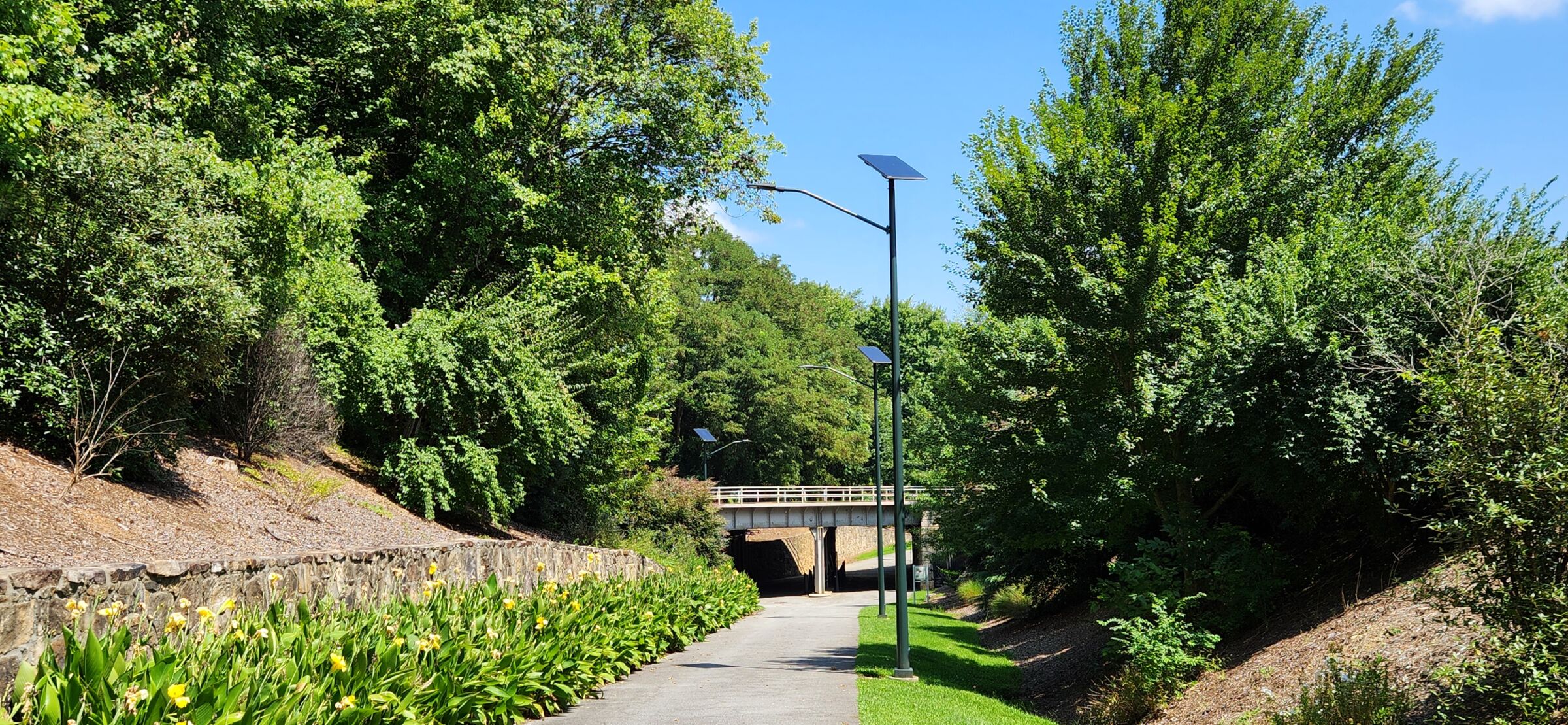
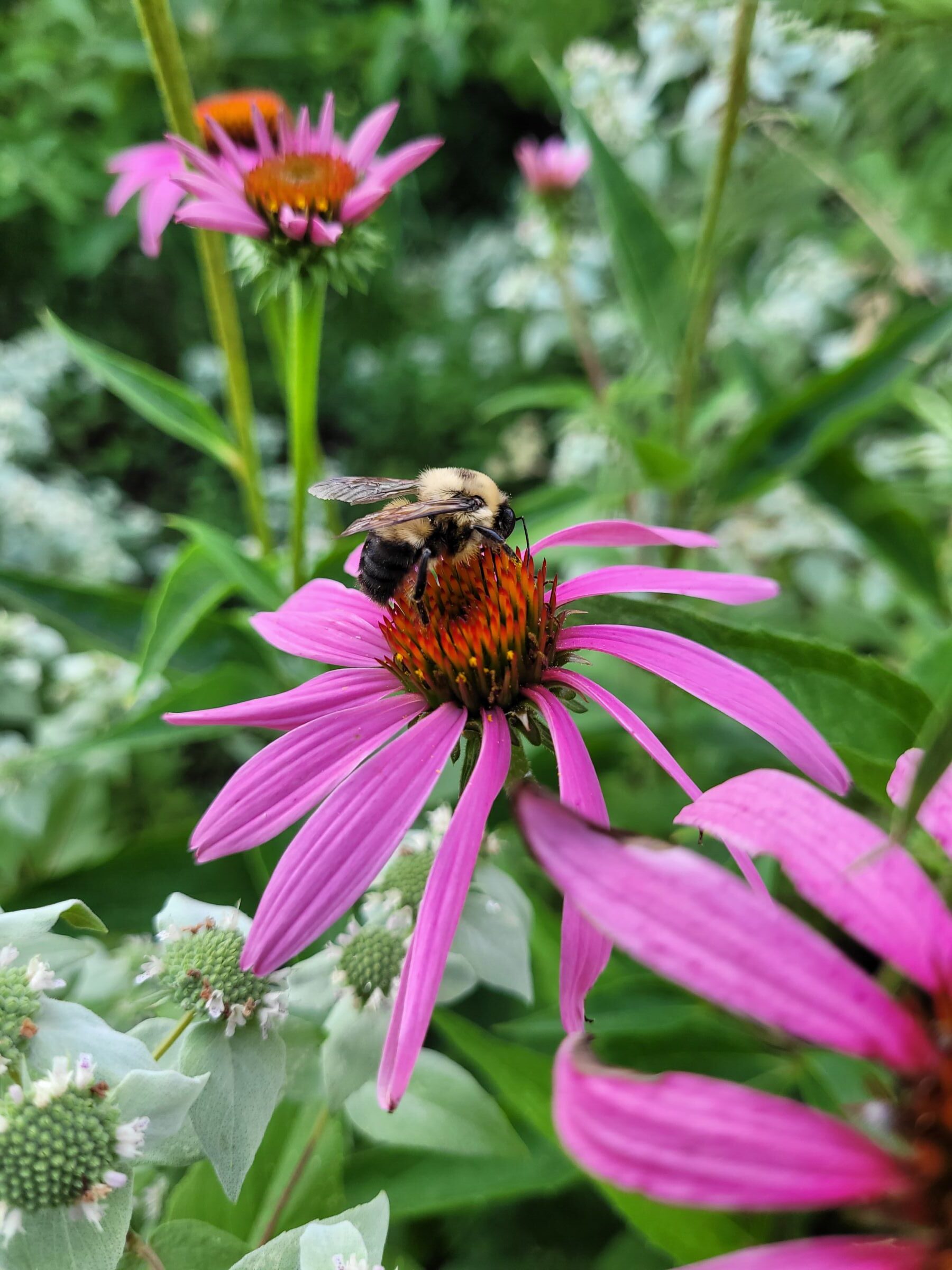
Bird, Bee, and Butterfly Pollinator Garden
The Bird, Bee & Butterfly Pollinator Garden is located at Woven Works Park on the Downtown Greenway at the corner of Lindsay and Murrow Blvd at 401 Cumberland Street. The garden surrounds the day-lighted Muddy Creek stream along the edge of the park and is designed to attract native pollinators. Local advocates including the T. Gilbert Pearson Audubon Society, the Piedmont Bird Club, the Carolina Butterfly Society, and the NC Native Plant Society were helpful in the design and installation of this garden. The process included sheet-mulching as an environmentally friendly technique that kills unwanted grasses and weeds without destroying the structure of the soil. 4 Layers of unprinted newsprint were topped with 4-6 inches of leaf mulch and remained on the site for 6 months. In addition, solarization of the soil with black plastic happened for another 6 months. This allowed the site to be prepared without the use of chemicals and disturbance of the soil. Plants and seeds were grown on the site and have been cared for by a dedicated group of volunteers who assist the city’s Parks & Recreation department with the care of this garden. Eagle Scout, Reid Lorenz, fabricated and installed Mason Bee houses at the Pollinator Garden and the Edible Orchard at Meeting Place on Smith Street to help attract bees necessary for pollination.
Permaculture Gardening
The philosophy of permaculture gardening has been used in several pocket gardens along the Northern Passage. Permaculture gardening is a form of land use modelled on natural ecosystems. It is a conscious design method that follows the cycles, diversity, and resilience found in nature. A permaculture garden is a design that mimics nature so that you can garden organically, encourage the right wildlife and have a low-maintenance garden all in one.
The Meeting Place
The Meeting Place at Tradition Cornerstone is surrounded by a fruit orchard and a native woodland. Together they provide shade, cool breezes, clean air, noise reduction and a beautiful place to relax. Charlie Headington designed the orchard and installed it with the assistance of the Greensboro Permaculture Guild. The native woodland is beautiful throughout the four seasons and includes native species that provide habitat and food for birds, bees and butterflies. Some of the plantings bear edible fruit and berries too, such as strawberry, blueberry, serviceberry, paw paw and elderberry. The 19 trees of the orchard grow eight kinds of organic fruit: cherry, plum, pear, apple, fig, oriental persimmon, apricot, and quince. Some ripen mid-summer—cherry, apricot, and plum, but the rest in autumn. It’s a public orchard, so only one fruit per person! As a Permaculture orchard, it relies on a set of plants, about 40 made up of 15 varieties, planted around each tree. They attract beneficial insects such as ladybugs, lacewings, hoverflies and praying mantis; the idea is that insects manage other insects. This reduces the need for traditional organic gardening like non-toxic sprays, organic fertilizers, regular inspection and weeding. In time, the entire orchard will be covered with this diverse, green mantle of supportive plants. The orchard becomes a mini-ecosystem.
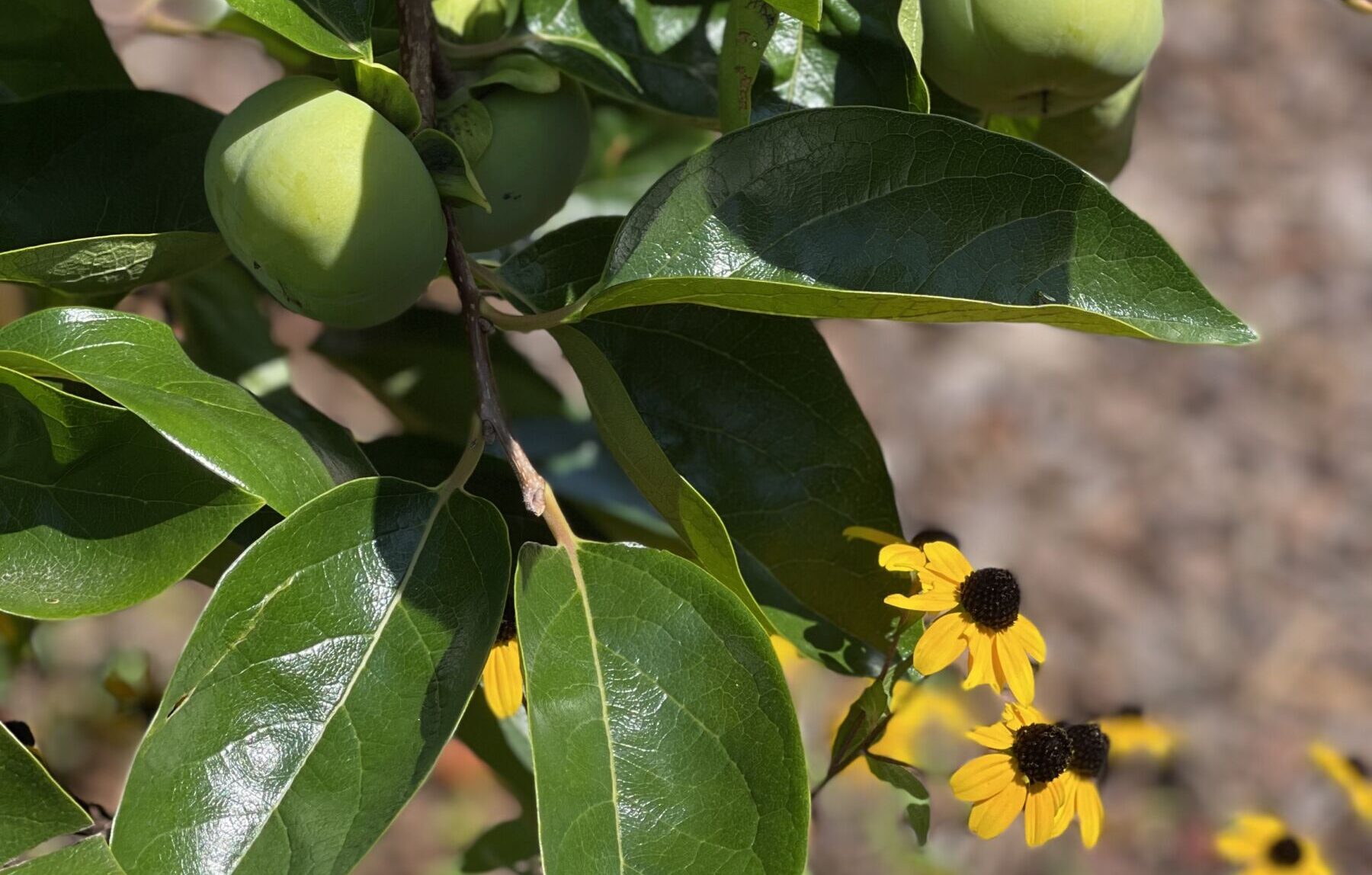
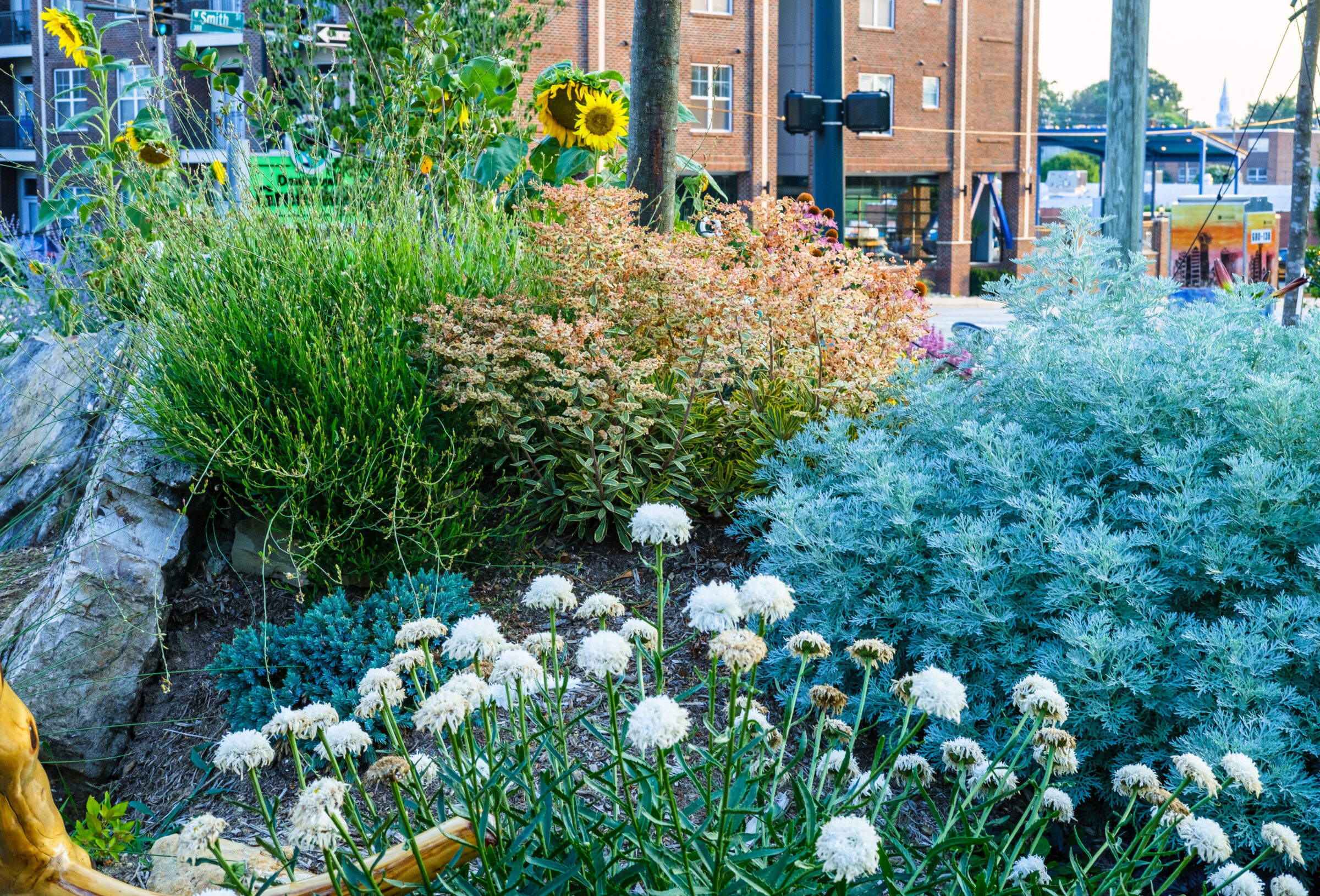
LoFi Park
The garden at LoFi Park uses the same principles in a more urban and heavily trafficked environment. This garden was designed by David Mudd and Justin Vettel and was inspired by elements found in nearby Fisher Park, features include a diverse canopy of deciduous and evergreen trees, a lush understory of shrubs and perennials, topographical relief, a water feature, benches and tables, outcroppings of natural stone, tributes to Fisher Park’s distinctive styles of architecture and masonry, meandering pathways, play areas, and a lawn large and hardy enough to host regular group activities. This lawn is actually artificial turf and while at first that may seem incongruent with the principles of permaculture gardening, the foundational infrastructure for the turf supports the overall drainage system of the site and the grass can withstand the heavy traffic it receives.
High Grove
Also designed by David Mudd and Justin Vettell, High Grove is an alternate path along Smith Street between Spring and Prescott Street. High Grove’s granite terraces and dense plantings of trees, shrubs, and perennials work to spread, slow, absorb, and use much of the rainfall now captured by the build of the retaining wall that defines its edge. For decades this lot hosted a grove of mature trees and an understory of shrubs and smaller plants that kept much of the Piedmont’s historically generous annual rainfall below ground, percolating slowly west toward Buffalo Creek. Residences and businesses were built among the trees: some were razed, others moved up the hill to Cedar Street. With each change, more canopy was lost, as was the soil’s astonishing ability to hold useful water. High Grove is designed to restore that water – holding capacity and regenerating the soil’s fertility. Hardscape elements also speak to regeneration: granite blocks that once served as downtown street curbing define the terraced beds, crushed asphalt used for the walkway’s surface consists of reclaimed material from local street resurfacing projects, and parts and pieces of old machinery have been worked into arches and railings by former local artist/welder Allie Crawford, who mines local junkyards and dump site for cast-offs that she disassembles and recasts as sculpture. High Grove beings these elements together as a hopeful artful effort to reclaim and restore a small urban lot, setting up a vibrant cycle that improves the soil as it support the life rooted in it and water filtering through it, while inviting visitors to stop, enjoy, and reflect.
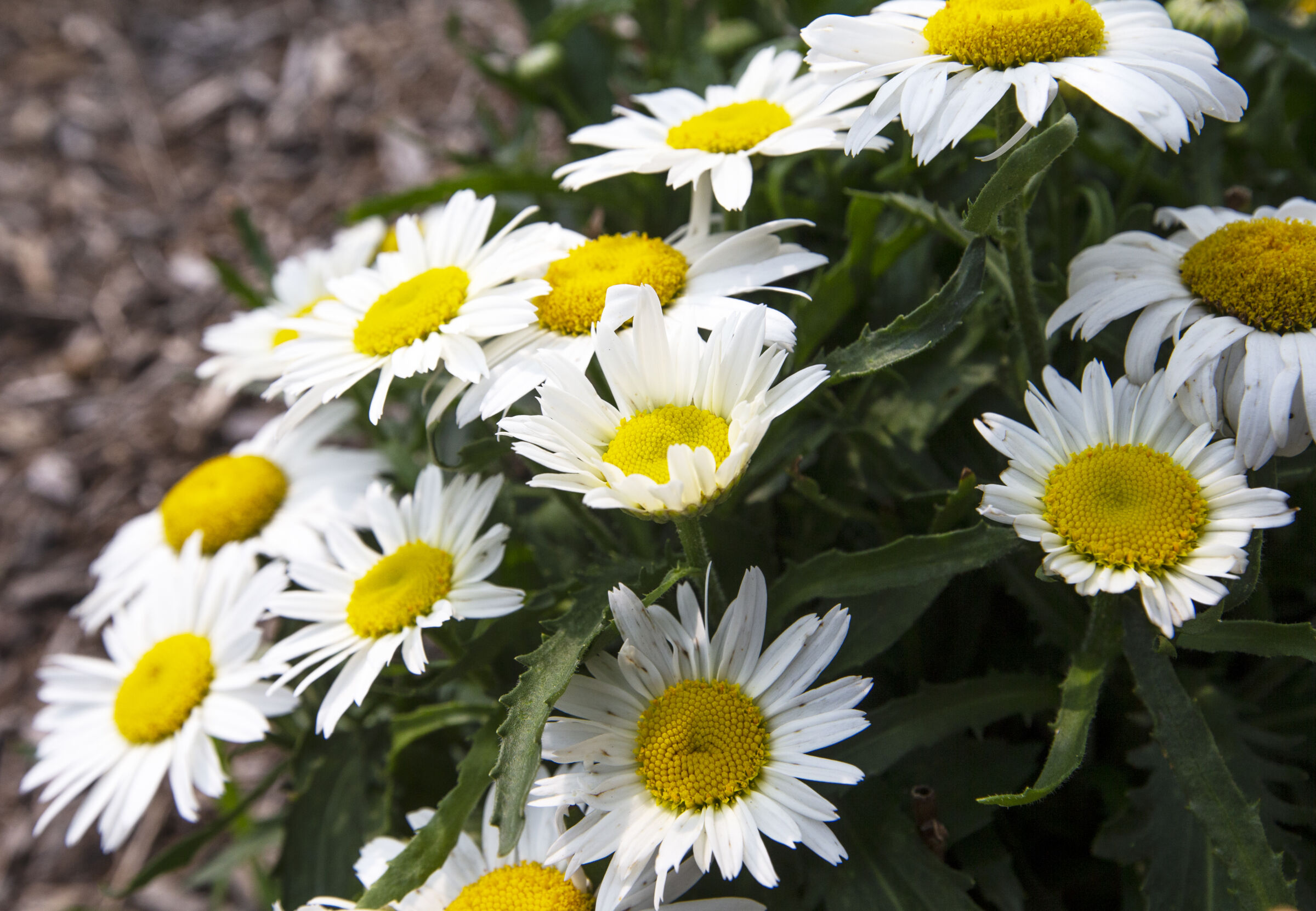
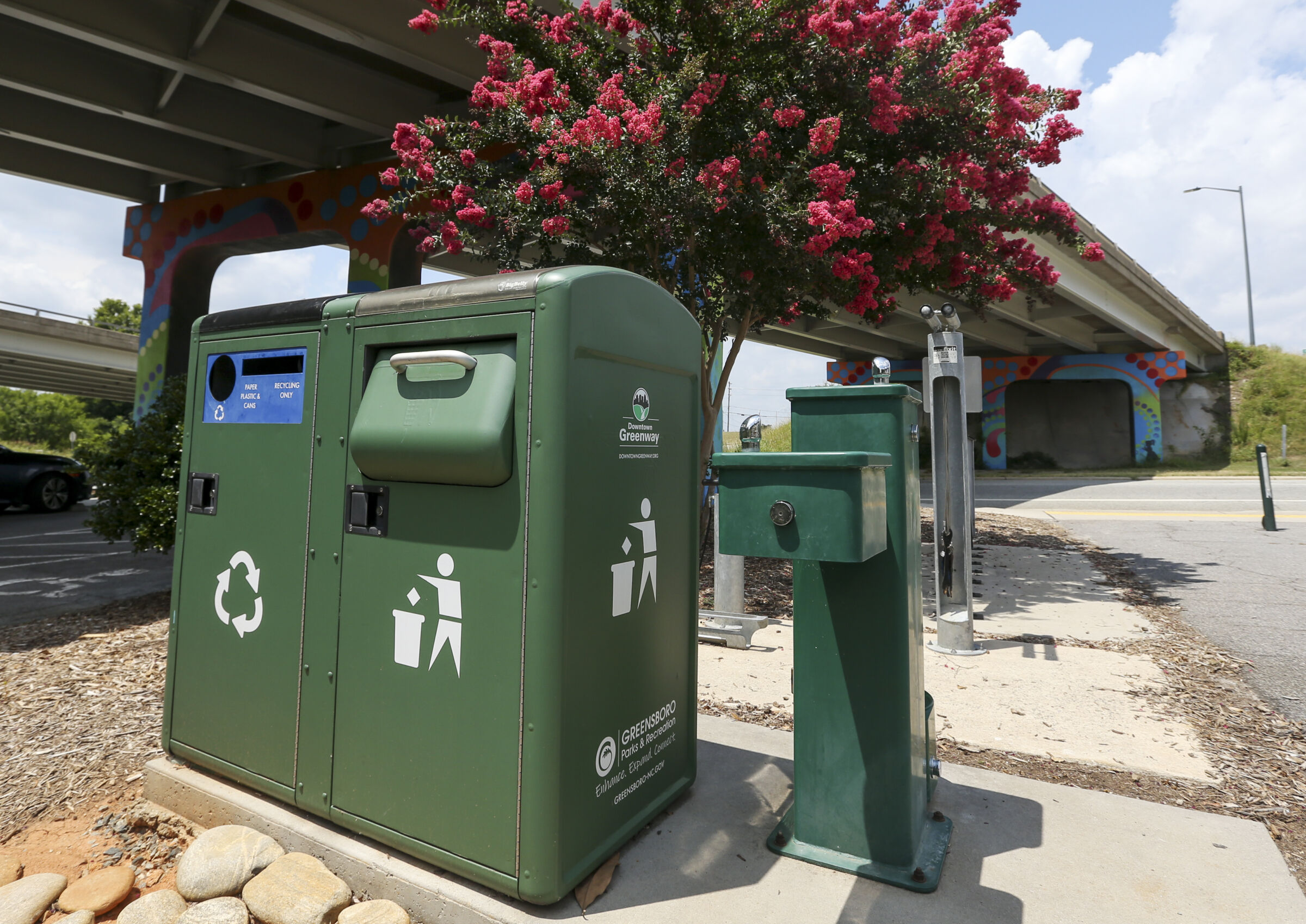
Big Belly Trash Compactors
The BigBelly Trash Compactors feature both a recycling unit and a trash unit. BigBellies hold five times more trash than the average can— all due to their solar-powered compactors. Through a wireless signal, they also send an email to the City of Greensboro Parks & Recreation Department to let them know when it’s time for a pickup.
